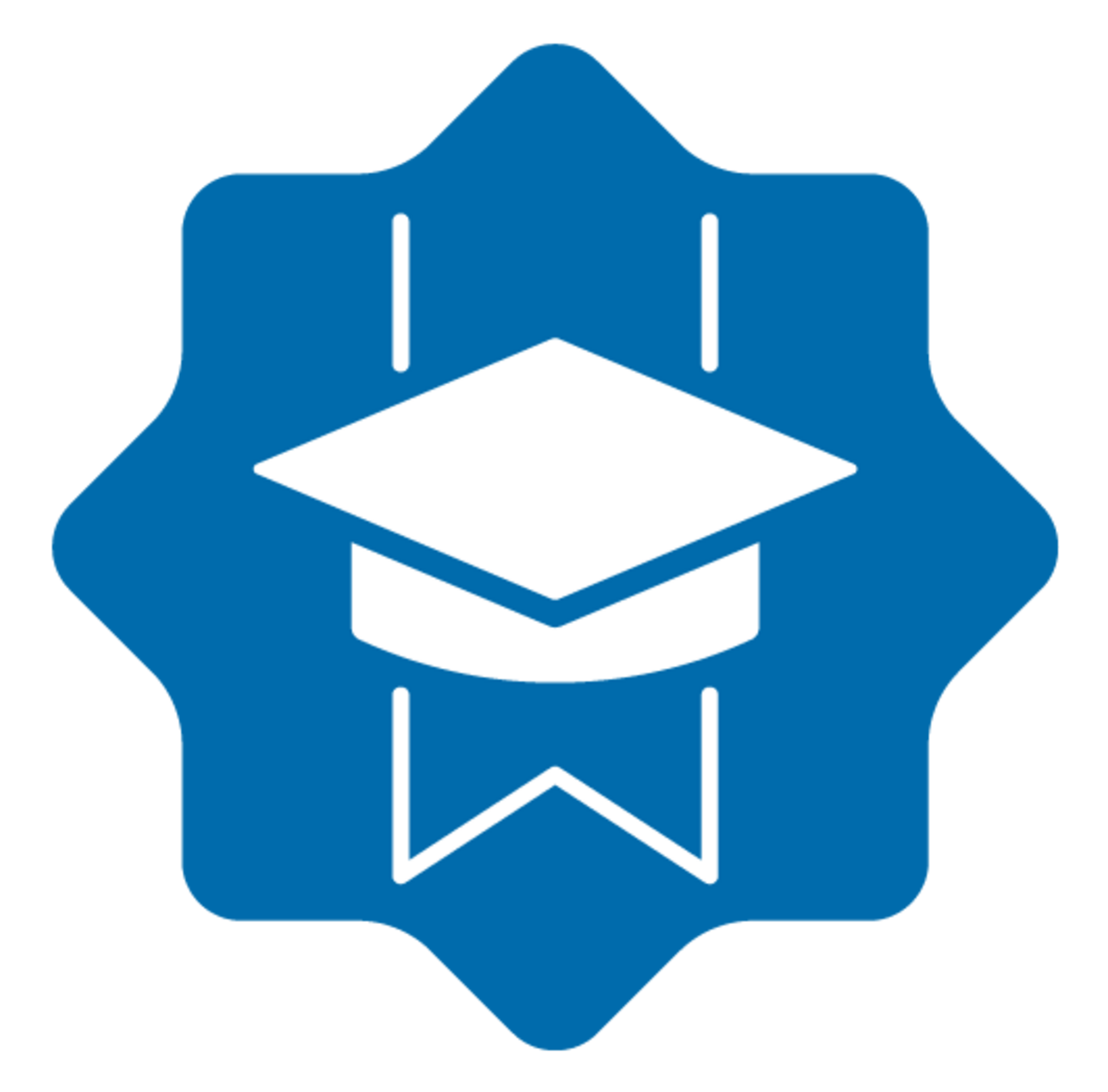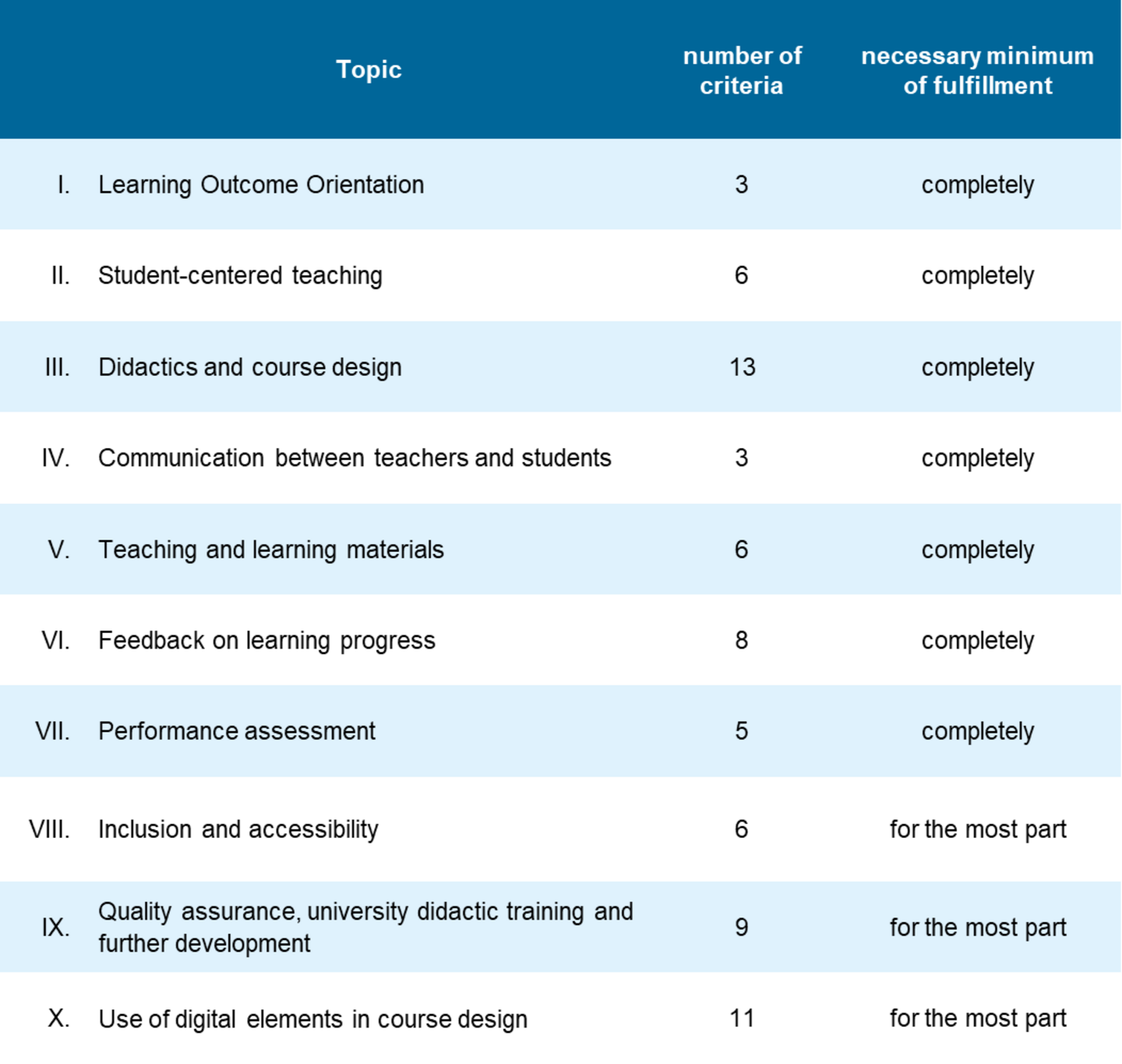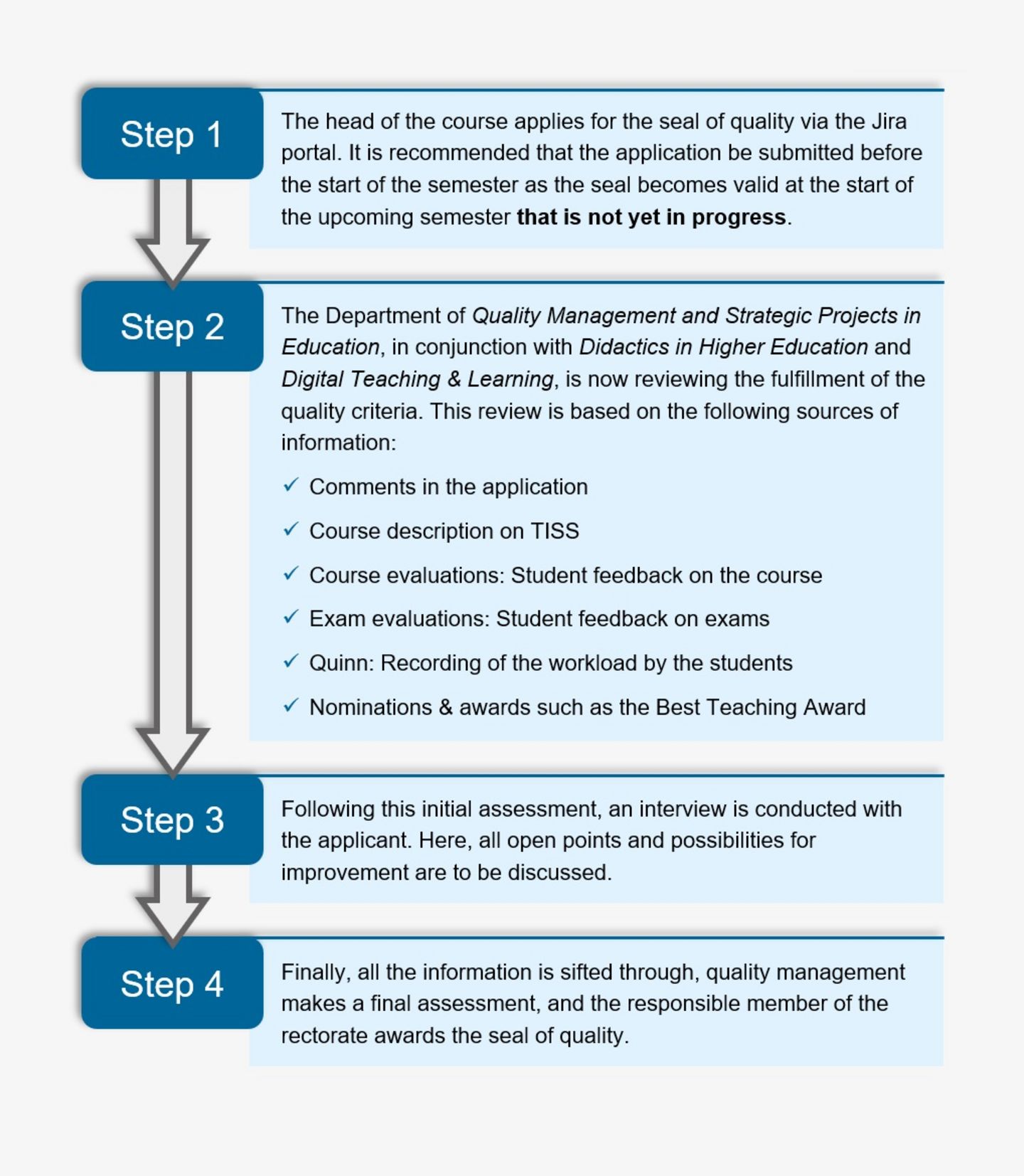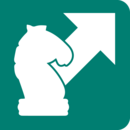
© Pixabay | Gerd Altmann
Seal of quality for teaching courses
In order to increase transparency in the quality of teaching at TU Wien, the seal of quality for excellent courses is now being awarded. On the basis of a clearly defined catalog of criteria that can be viewed at any time, those lectures are awarded that fulfill the conditions to the required extent.

© Zentrum für strategische Lehrentwicklung
Seal of quality for teaching courses
After being awarded by the Vice Rectorate for Academic Affairs, the quality seal is displayed visibly for everyone directly next to the course in TISS. It remains valid for 3 years; for an extension, the criteria are re-examined - thus ensuring that the quality standards continue to be met consistently.
If the qualification is not successful on the first attempt, the teams from Higher Education Didactics, Digital Teaching & Learning, as well as Quality Management are available to provide advice and support. Those who want to adjust formal criteria in advance can find useful tools and links to further sources at the bottom of the page.
What are the requirements to be met?
The criteria catalog for excellent teaching comprises 10 subject areas, for which a total of 70 quality criteria are formulated. The necessary extent of fulfillment of the criteria is specified for each topic area and can be seen in the figure below.

table of crtieria for the seal of quality for teaching courses
How do I get the quality seal?
Four steps are necessary to obtain a seal of quality for excellent courses. The process is illustrated in the following figure.

The list of criteria in detail
1. the learning outcomes are mapped in the course description in TISS and fully reflect what students should know (in the sense of knowledge) and be able to do (in the sense of competencies) at the end of the course (LV).
2. the teaching and learning methods are aligned with the achievement of the formulated learning outcomes.
3. the performance assessment is designed in such a way that the achievement of the formulated objectives can be validly verified.
4. the learning outcomes of the TISS course description are formulated according to the criteria of step-by-step guidance (details will follow).
1. The course description contains the learning outcomes and the detailed course concept at the beginning of the semester.
2. Examination dates are published in TISS at the beginning of the semester.
3. examination format and assessment criteria are defined in time and communicated transparently in TISS.
4. the workload of the course specified in ECTS corresponds to the actual learning effort of the students.
5. Teachers communicate the expected requirements for submissions, e.g. submission date(s), literature recommendations, citation rules, quality criteria, formatting, file format, etc.
6. The contents and the level correspond to the location of the LVA in the respective curriculum.
7. there are offers to make up for missing prerequisites, especially at the beginning of the study, e.g. bridge courses, adjustment courses, etc.
8. additional materials or references are offered to deepen the knowledge in order to support students who are especially interested.
9. the individual units within the course are well coordinated in terms of content.
10. the course is clearly structured in terms of content and logically structured.
11. teachers vary the methods according to the competencies to be acquired and the content of the course.
12. teachers pay attention to varied learning settings and meaningful use of media.
13. teachers encourage interaction with learners and among learners.
On the colab page for the corporate design, opens an external URL in a new window of the TU Wien, in addition to the TU logos, color codes and formal specifications, there are also document templates, opens an external URL in a new window for Office 365. To purchase the Office 365 package, there is also a link to the TU software store, opens an external URL in a new window on the page.
1. teachers and students treat each other with respect.
2. teachers are available for students via clearly communicated channels (e.g. by e-mail, via TISS or TUWEL).
3. teachers offer students opportunities to ask questions (e.g. in the form of consultation hours or online forum in TISS).
1. teaching and learning materials are provided (in TUWEL).
2. teaching and learning materials are up-to-date and free of errors.
3. teaching and learning materials are made available to students at the lowest possible cost and time.
4. required materials are announced in advance.
5. teaching and learning materials provided comply with applicable copyright and data protection regulations.
6. teachers use standardized file formats that can be viewed on many different end devices.
1. Provided materials also contain questions about the material that students can use to check their learning progress.
2. teachers offer appropriate tools for self-evaluation (e.g. quiz formats).
3. self-assessment with reflection (self-reflection) of the own learning status and the further procedure in case of difficulties.
4. teachers communicate the assessment of (partial) performance.
5. students can inspect examinations upon request (compliance with deadlines).
6. students receive comprehensive feedback on their submissions.
7. teachers monitor and communicate learning progress (e.g. via feedback on individual work assignments; short surveys).
8. teachers initiate collegial feedback (peer feedback) among students (e.g. during presentations, exchange in small groups and across groups about the respective findings).
1. teachers adapt examination methods and formats to the respective course format. 2. teachers ensure that the competencies formulated in the learning outcomes are examined when compiling examinations.
2. teachers take care in the composition and implementation of examinations to test those competencies that are formulated in the learning outcomes.
3. Teachers take into account the relevant regulations of the statutes or the guidelines for online examinations, opens an external URL in a new window.
4. The data protection requirements are implemented in online examinations.
5. Teaching adhere to the requirements by the statute, opens an external URL in a new window in dealing with the use of unauthorized aids.
1. students with disabilities or impairments are treated in a non-discriminatory manner; if necessary, the TUW barrier-free department is consulted.
2. To ensure fairness, recognized methods of compensating for disadvantages (e.g. in terms of examination format, preparation of examination content) are used depending on the impairment.
3. examination information is prepared in an accessible manner.
4. barrier-free access to the LVA is ensured if required.
5. diversity-sensitive design: neutral design of teaching and learning materials in terms of gender, age, religion, ethnicity, etc.
6. When using videos, the Accessible Instructional Video Guide has been considered.
For details on accessible videos, the Accessible Video Delivery Guide, opens an external URL in a new window is available on colab. Furthermore, there is the possibility to use the Accessibility Checker, opens an external URL in a new window for TUWEL courses: With the help of this tool, the teacher can have the content on TUWEL checked for accessibility by means of simple mouse clicks.
1. teachers ask students to participate in the course evaluation and use this feedback to further develop the course.
2. teachers provide time for students to participate in the LVA evaluation during the LVA.
3. teachers collect student feedback during the course and take the results into account for the further implementation and development of the course.
4. teachers collect participant-independent feedback on LVA design, the offer of teaching and learning materials, tools and methods used for the further development of their course. (collegial observation, consultation by HSD).
5. teachers discuss their LVA design, the range of teaching and learning materials, tools and methods used with other teachers (e.g. teachers help teachers).
6. Teachers reflect on the teaching and learning materials used and improve them in terms of content and (media) didactics.
7. teachers work on the qualitative further development of their teaching and learning materials by incorporating both content from advanced training courses in higher education didactics and their own findings from the course or feedback on the course.
8. Teachers attend required in-house technical and didactic courses.
9. teachers use the internal infrastructure for their courses.
The university didactics department offers internal continuing education opportunities.
1. Instructors use assignments and submission tools on TUWEL and allow students to view assessments.
2. Teachers additionally select digital tools from the recommended standards (Digitaler Werkzeugkatalog | TU Wien).
3. Accessibility is also offered as far as possible when using digital tools.
4. asynchronous and synchronous phases are didactically coordinated in a meaningful way.
5. digital elements are an integral part of the course design.
6. teachers use learning videos as a guide for students.
7. all tools used in the LVA are mentioned in the LVA description in TISS to ensure that students have the appropriate tools or the necessary technical requirements available in time.
8. The use of digital tools is didactically embedded in the design of the LVA.
9. Teachers reflect on their use of methods and are able to justify their use (in terms of didactics).
10. open educational resources (OER), recordings from previous years or license-free materials are used.
11. teachers use software to identify possible plagiarism and check the protocols of the plagiarism software.
In addition to the Digital Teaching and Learning Guide, opens an external URL in a new window, the Digital Teaching and Learning Team's website also includes references to offerings for professional development and workshops.
FAQs
The seal of quality for excellent teaching is awarded centrally by the Vice Rectorate for Teaching. The award is based on a catalog of criteria and is thus as objective and transparent as possible.
The greatest advantage lies above all in the evaluation process: During this time, a qualified and motivated team of university didactics, digital teaching and learning as well as quality management is available to the lecturer. This team offers assistance in the development and optimization of the LVA.
In addition, the seal is placed clearly visible on TISS. Due to the transparency and visibility of the quality criteria, it is immediately apparent that the given course is an excellent one.
The processing time depends on the extent to which the course already covers the criteria catalog.
Furthermore, an interview will take place between the team of the quality seal and the teacher, so that a possible appointment will also have an influence on the duration of the process.
Finally, the implementation of the suggestions made during the interview may take a certain amount of time. This should be taken into account when submitting the application.
The seal of quality is always valid from the beginning of the following semester. Accordingly, an application at least 8 weeks before the start of the semester would be advisable.
At first glance, the abundance of the criteria catalog seems overwhelming and the amount of work might seem very high to the teacher.
In fact, however, the first step is only to report the LVA via the Jira portal - the next steps are then taken by the Center for Strategic Teaching Development. Possibly, some ideas for a further development of the LVA design will result from the feedback.
The seal of quality is related to the course and the teacher. If teaching takes place in cycles, the seal is no longer valid for the same course if it is held by someone else. The teacher of the other cycle must - if interested - go through the cachet process himself/herself.
The seal of quality can be renewed every three years, otherwise it loses its validity. For renewal, the process is shortened, it is only checked for changes. Only if there has been too long a "seal of quality-free" period will the entire process have to be gone through again.
If there are serious changes to the LVA, either before or after the expiration of the validity, for example if the lecturer changes, the entire cachet process must be run through.
Of course! This is the great strength of the quality seal. The three areas of higher education didactics, digital teaching & learning, and quality management provide continuous and low-threshold support for the process - before, during, and, of course, after the process.
Application form
The application is made via the jira portal, opens an external URL in a new window.
